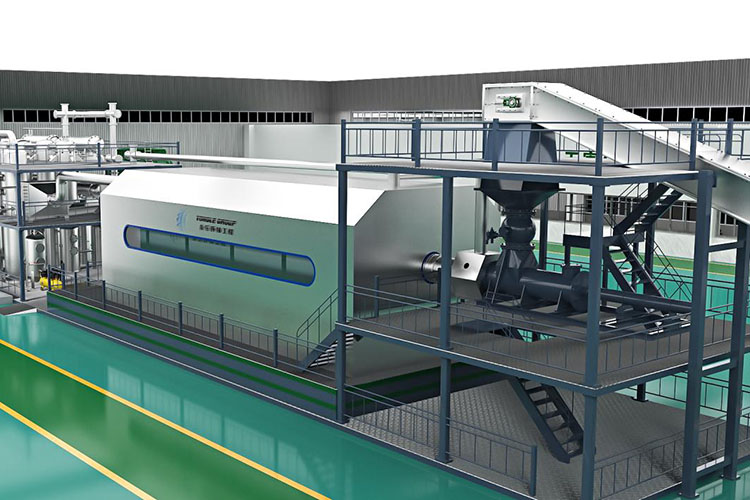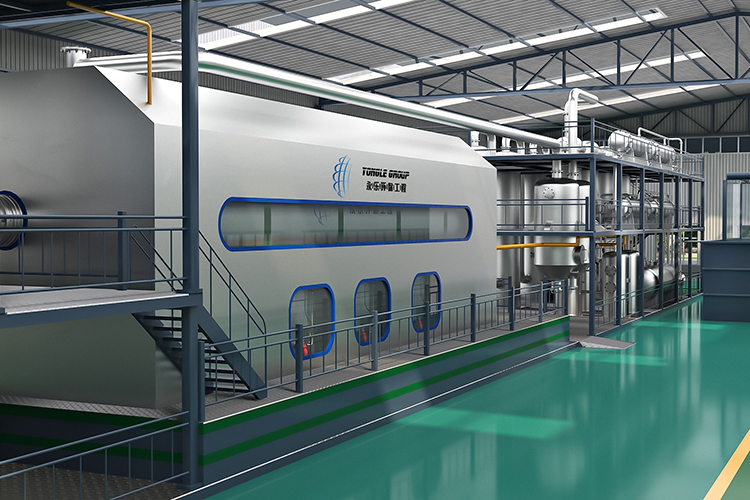In the treatment of medical waste, high-temperature steaming equipment plays a crucial role as a highly targeted treatment method. This method not only effectively eliminates potential pathogens, but also has significant advantages in terms of ease of operation, environmental friendliness, and economic cost.
There are various types of medical waste, including infectious waste, operating room waste, and ward waste. These wastes may carry various pathogens such as bacteria, viruses, and other pathogenic microorganisms, making their disposal particularly important. High temperature steaming technology effectively kills the vast majority of pathogens by treating waste in a high-temperature environment, thereby preventing potential threats to the environment and public health from waste.

In high-temperature cooking equipment, waste is placed in sealed containers or equipment and heated to a high temperature state, usually above 120 degrees Celsius. This temperature can quickly kill the vast majority of pathogens, including heat-resistant spores and viruses. The entire process not only enables efficient sterilization, but also maintains relatively simple operation. Compared to other treatment methods such as chemical disinfection or incineration, high-temperature steaming does not require a large amount of chemical agents, thus avoiding the generation of additional chemical waste and having a smaller impact on the environment.
In addition, the investment and operating costs of high-temperature cooking equipment are relatively low. Equipment is usually relatively simple and easy to control and maintain, enabling medical institutions and waste disposal units to effectively dispose of waste without significantly increasing economic burden. This cost-effectiveness advantage has led to the widespread application of high-temperature cooking technology worldwide and has become one of the preferred waste treatment methods for many medical facilities.

In practical applications, the operation process of high-temperature cooking equipment is relatively intuitive. Waste is first collected and classified to ensure that different types of waste can be properly handled. Subsequently, the waste is loaded into well-designed containers or equipment, which heats the waste to the required high temperature level through a built-in heating system. Within the set processing time, high-temperature steaming technology can completely eliminate pathogens in the waste, ensuring the safety and harmlessness of the treated waste, which can be further processed or disposed of.
In summary, high-temperature steaming technology, as an important means of medical waste treatment, has been widely applied and recognized due to its high efficiency, simplicity, environmental friendliness, and low economic cost. With the continuous improvement of medical waste management standards and technological advancements, we believe that high-temperature cooking technology will continue to play a key role in protecting the environment and public health, contributing to the construction of a healthy and sustainable society.
Yongle Environmental Protection is mainly engaged in the research and development, production and sales of complete sets of technical equipment for organic solid waste disposal and comprehensive utilization. Production and manufacturing, domestic waste treatment equipment, tire pyrolysis equipment, medical waste disposal equipment, hazardous waste disposal equipment, and achieve efficient and comprehensive utilization of resources through independently developed low-temperature anaerobic pyrolysis equipment technology solutions.
Tags:The processing range and advantages of medical waste high-temperature cooking equipment,,YONGLE GROUP
 Latest news
Latest news


























